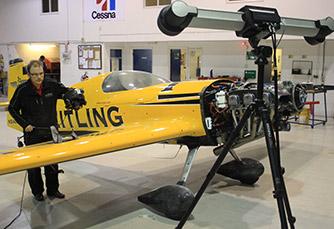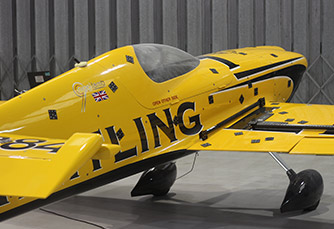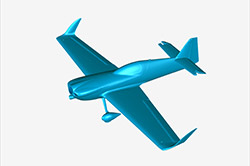
Launched in 2003, the Red Bull Air Race is globally renowned. By taking the existing model of Formula One Racing, and combining it with extreme aerial challenges, the sport has grown into one of the most exhilarating and fastest races on the planet. The ability to fly at speeds of over 400 km at low altitude and deal with extreme race conditions, has seen some of the best pilots from all over the world flying some of the most aerodynamic racing machines known to man.
To win the coveted championships, race teams are analyzing their current planes’ performance in more engineering detail than ever before. When the main propulsion of every plane is standardized, the only areas left to adjust are the aerodynamics of the plane body itself. This specifically relates to how the airflow affects the plane and also the surplus drag coefficient that is applied to parts that are not enhanced aerodynamically. The same engineering strategy can also be directly applied to the angle of attack on the race track: adjusting the entry speeds and pulls between pylons during a race can result in times that are in some cases milliseconds apart. All of these factors, along with the natural ability of each pilot, make for an extremely challenging race environment.

The Breitling Race Team, with British pilot Nigel Lamb, was particularly focused on increasing aircraft performance levels. Mr. Lamb has been working on his MXS aircraft since 2010 and has invested in a multitude of technologies to assist the design and air flow developments across the surface of the plane—and gain split seconds when approaching every single gate.
As with most manufacturers, the complete CAD assemblies of aircraft structures are strictly confidential. It makes it very difficult to make any modifications to a plane when baseline measurements are not available. For example, the surface profiles and shape are generally designed to deal with optimal air flow across the body; the direct replication of the machine can be difficult to comprehend when the critical information isn’t available. In the aerospace industry, these complex shapes cannot be measured with traditional methods and would conventionally take several weeks to capture in a standard working environment. What’s more: it would take a considerable amount of time to digitally create the model in a CAD package. This all assumes that the measurements were correct in the first place!
With this in mind and a vision of making some radical changes to the current race plane, the Breitling Race Team approached Measurement Solutions for this year’s race season for assistance in digitizing the aircraft as accurately as possible.
Measurement Solutions was tasked to provide the Breitling Race Team with a full and accurate 3D scan of the complete aerodynamic shape of the aircraft, such that the shape of the aircraft could be truly represented in flow analysis testing. The data required needed to be of sub-millimetre accuracy, yet it had to be acquired with minimal interference in the run up to the season start.
Because accuracy over a large volume was the most critical aspect to consider, both traditional scanning systems, such as portable arms and laser tracking, were quickly discarded as unviable options. They could not provide highly accurate or reliable data in a quick and easy manner.
Creaform’s handheld laser scanner MetraSCAN 3D™ was used to scan the entire aircraft, providing an easy and fast means to acquire highly accurate measurements over large areas. With Creaform’s patented TRUaccuracy™ technology built into the system, accuracy is ensured in all measurement conditions, unlike conventional measuring equipment that requires stable environments and experienced users. This proved invaluable while scanning the aircraft in a cold hangar late into the evening!
The MetraSCAN 3D is tracked by a dual-camera system, which continuously located the position of the scanner relative to the aircraft at all times. A dynamic referencing system also meant that measurements could be taken regardless of vibrations in the environment in which they are taken in—even an aircraft hangar! The system also provided the ability to quickly and easily extend the measuring volume or to re-position the tracking device without the need for complicated and time-consuming adjustments.
To further enhance the project’s accuracy, the system was used in conjunction with Creaform’s MaxSHOT 3D optical coordinate measuring system. The MaxSHOT 3D, photogrammetry device generated an accurate reference map across the whole surface of the plane. This ultimately minimized the time that would normally be required to manually register the scan data sets together. This also enabled areas to be re-scanned as required, or for parts to be removed so that “hidden surfaces” could also be scanned in great detail.

Within 24 hours, the Measurement Solutions team scanned the entire aircraft within 1 mm accuracy. This acquisition was completed and post processed, before leaving site, into an industry standard STL mesh, ready for direct import into airflow analysis and CAD software.
Creaform and Measurement Solutions are extremely proud to have played a part in helping the Breitling Race Team and Nigel Lamb to win the World Championship of Red Bull Air Race this past October! Congrats to the team!